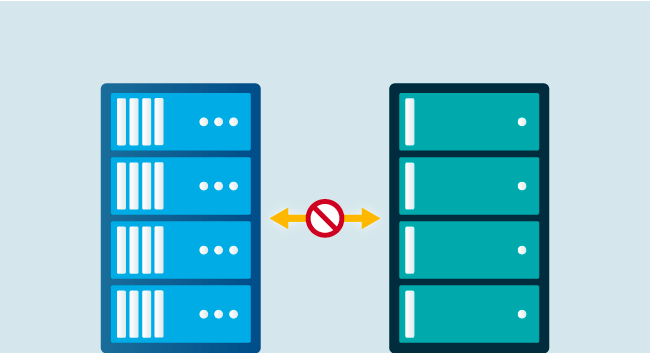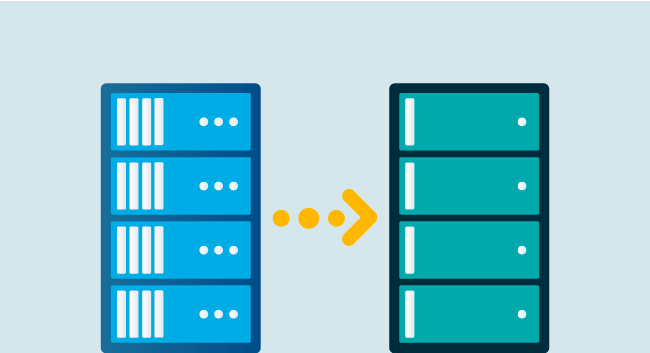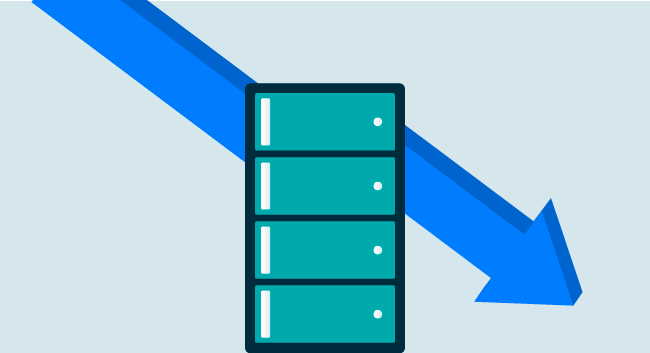Storage hardware, like any other IT technology, has a finite lifespan. Over time, the proper functioning of components may degrade, increasing the risk of failures, data loss, and system downtime. By refreshing storage hardware every few years, organizations can proactively address reliability concerns, ensuring optimal data availability, business continuity, and mitigating the risks associated with aging infrastructure.
It is also important to tap into newer storage technologies, such as faster interfaces, newer protocols, higher density, updated data services, etc. Hardware refresh unlocks a world of possibilities to modernize the storage infrastructure and support the ever-increasing demands of data.

While there are many benefits and reasons for undergoing the refresh, the reality is that these are complex undertakings that pose significant challenges for IT teams. From compatibility issues and data migration pains, there are numerous practical challenges. Let’s explore them in more detail and discuss best practices to manage and overcome them.
#1 Compatibility Challenges and Interoperability Issues

Refreshing storage hardware often introduces compatibility challenges when integrating new devices with the current infrastructure. These challenges mainly arise due to differences in data services, firmware versions, and proprietary interfaces between different vendors’ storage solutions or even different models from the same provider. The incompatibilities can hinder system functionality and performance and prevent storage spanning (where the free capacity of one storage system could be used somewhere else).
#2 Data Migration Complexities

Data migration is a crucial component of storage hardware refresh that involves the transfer of data from old to new systems. However, storage systems freeze data updates (reads and writes) during migration to prevent data corruption issues. This leads to downtime for the applications relying on the data being migrated. The larger the dataset, the greater the impact on the applications.
It is to be noted that the migration speed is dependent on the slowest component in the system, which is typically the older storage equipment that is being refreshed. Therefore, even if the new hardware is faster, it doesn’t speed up data migration.
These challenges necessitate meticulous planning and execution from IT teams, considering data migration strategies, application dependencies, and potential operational disruptions.
#3 Risk of Adverse Impact on Business Operations

If storage refresh and upgrades aren’t effectively managed, they can pose significant risks to the operational continuity of the business. We already discussed the case of applications unable to access data that is undergoing migration. Even if data access is made possible via server virtualization features like Storage vMotion or Live Migration, it is likely to negatively affect operations. These capabilities need bandwidth, both on servers and storage, for migration, which unfortunately are the same resources feeding data to your applications. Simply put, your outdated hardware is forced to handle more than its regular workload which could lead to performance decline or even disruptions during the migration process.
#4 Cost Management and Budget Constraints

IT teams need to assess budget constraints while ensuring the selection of appropriate storage solutions that meet performance, capacity, and reliability requirements. This involves evaluating total cost of ownership (TCO) – including CAPEX and OPEX – of the new storage and the often-overlooked costs of migration that span planning, testing, and the actual implementation of the migration.
Particularly in situations where you are keen to avoid the continuous upgrade cycle imposed by your current storage provider—a cycle which often necessitates replacing entire storage devices—it’s crucial to factor in these potentially significant expenses. These costs may persist even if you are committed to a single hardware vendor but run into incompatibility between brands and models.
#5 Skill and Knowledge Gap

Storage hardware refresh often-times requires specialized skills and knowledge to effectively manage the new storage technology. IT teams may face challenges related to training, upskilling, or acquiring the expertise needed to implement and manage the old and the new storage infrastructure at the same time. Overcoming the skills and knowledge gap is essential to ensure optimal configuration, performance tuning, and ongoing maintenance of the storage environment.
How Software-Defined Storage Can Help Simplify Hardware Refresh
Software-Defined Storage (SDS) is a novel storage approach that separates storage software from the physical hardware. It provides a flexible layer that automates and simplifies data services management. Being hardware-agnostic, SDS can work across various platforms and reduces vendor lock-in, offering you more control over your storage resources.
Let’s see how SDS benefits you in more detail in correlation with each of the storage refresh challenges discussed above.
| Challenge | How Software-Defined Storage Can Help |
|---|---|
| 1. Compatibility Challenges and Interoperability Issues | Overcome compatibility issues through abstraction enabled by SDS by becoming fully hardware-agnostic across vendors, models, and storage technologies. The fact that SDS makes interoperability possible, it bridges compatibility gaps, enabling cross-system data placement, and better utilization of heterogeneous storage resources. |
| 2. Data Migration Complexities | SDS supports fully transparent and non-disruptive data migration, allowing for data access and updates during the migration process, thereby avoiding application downtime. As a result, there is no need to worry about the speed of migration being hindered by older hardware. It doesn’t matter at all anymore as the application remains unaffected. |
| 3. Risk of Adverse Impact on Business Operations | By efficiently managing resource allocation during migration, SDS reduces strain on outdated hardware and avoids disruptions and performance degradation during the process. Even though server virtualization tools like Storage vMotion or Live Migration require resources for migration, SDS can manage this without forcing outdated hardware to handle more than its regular workload. |
| 4. Cost Management and Budget Constraints | With SDS, you can expand capacity with commodity hardware rather than expensive premium equipment, thereby reducing CAPEX and OPEX. Unified and automated management of the storage pool helps drive down costs further. The vendor-agnostic nature of SDS helps to avoid the cycle of vendor lock-in, offering flexibility and more cost-effective choices for future upgrades. |
| 5. Skill and Knowledge Gap | SDS abstracts away the complexity of storage migration, reducing the need for specialized technical skillsets and knowledge. Migration becomes a background process and IT teams can focus on strategic operations rather than low-level storage management. |
SDS offers unparalleled flexibility and scalability to adapt the infrastructure to changing storage needs. Eliminate the need for complete overhauls of the storage infrastructure and benefit from a future-proof solution that can easily accommodate growth and evolving storage requirements.
Contact DataCore today to find out more about our SANsymphony software-defined storage solution and how it can alleviate the complexities and challenges associated with storage hardware refresh and navigate the ever-changing storage landscape while maximizing the value of your storage investments.